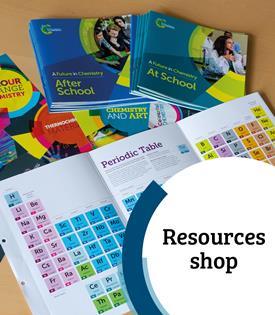All Practical skills and safety articles
-
 Resource
ResourceChromatography challenge | 16–18 years
Explore analytical techniques and their applications with a chromatography investigation and research activity
-
 Exhibition chemistry
Exhibition chemistryDemonstrate concentration and density with a transition metal colloid cell
Boost 11–14 learners’ understanding of diffusion and transition metal chemistry
-
 Practical
PracticalEnthalpy change of combustion of ethanol | practical videos | 14–16 years
Video and resources investigating the heat energy change of combustion of ethanol
-
 Practical
PracticalSimple distillation | practical videos | 14–16 years
Video and resources showing how to separate water from a coloured solution
-
 Practical
PracticalPaper chromatography | practical videos | 14–16 years
Video and resources showing how to separate colours in inks using paper chromatography
-
 Practical
PracticalRates of reaction | practical videos | 14–16 years
Video and resources showing how the concentration of sodium thiosulfate solution affects its rate of reaction with hydrochloric acid
-
 Analysis
AnalysisThe chemicals cost crisis
As prices rise fast, some schools reluctantly cut back on practical work
-
 RSC News
RSC NewsImproving our Chemical misconceptions collection
Discover a wealth of classroom resources addressing student misconceptions and covering the theory behind various pedagogical approaches
-
 Feature
FeatureSuccessful strategies for sequencing knowledge
Discover how to effectively develop your students’ knowledge and skills by sequencing practical activities
-
 Feature
FeatureWhy it’s important to encourage student decision-making in practicals
Improve student engagement, motivation and behaviour by giving them more choice
-
 Exhibition chemistry
Exhibition chemistryCreating a supersaturated gas evolving oscillator
Use this fizzy practical for a kinetic and thermodynamic showdown in class
-
 Project
ProjectNanoparticles in sunscreen challenge | Chemistry for All project | 14–16 years
Make your own sunscreen and determine its SPF using UV light transmission
-
 Project
ProjectHard water challenge | Chemistry for All project | 14–16 years
Investigate the relationship between the concentration of calcium ions and the ‘hardness’ of water
-
 Project
ProjectChemistry at the crime scene investigation | Chemistry for All project | 11–14 years
This forensic science project uses chemical analysis and observation skills to investigate a crime and solve the case
-
 Project
ProjectAnalysing the chemistry of food | Chemistry for All project | 14–16 years
Analyse food and drink samples using TLC, titration and visible absorption spectroscopy with this engaging project
-
 Resource
ResourceQuicksand investigation | 14–16 years
Discover the properties of non-Newtonian fluids and how these could help you escape from quicksand
-

-
 Resource
ResourceInvestigating the sugar content and pH of fizzy drinks | 11–14 years
Compare fizzy drinks’ ingredients, acidities and health implications
-
 Resource
ResourceSalt (for cooking) activities | 11–14 years
Uncover the properties and health implications of salt in our diets
-
 Resource
ResourceBaking investigation | 11–14 years
Discover the purpose of each ingredient and test methods used to make cupcakes











